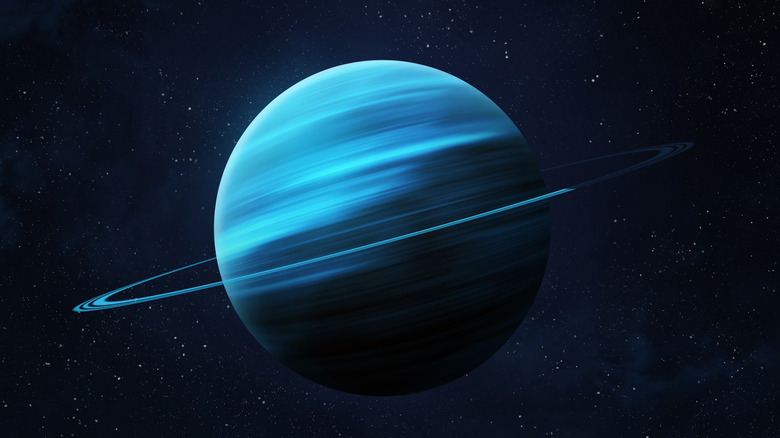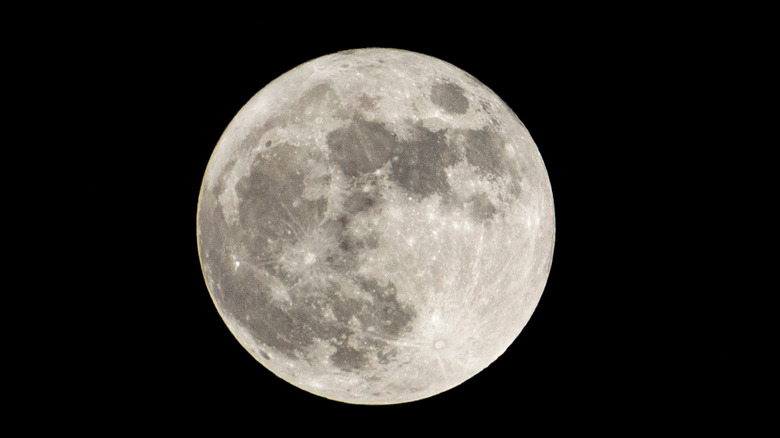Where Do Scientists Say Is Probably The Coldest Spot In Our Solar System?
How big is the Solar System? Well, consider the dwarf planet Pluto, the most distant of the nine famous bodies of the Solar System. At its most distant, per Space, it is an incomprehensible 7.5 billion kilometers (4.67 billion miles) from the Earth. In all of that space in-between, and beyond, there are all manner of wonders, many of which are surely still to be discovered.
NASA reports that the coldest place on Earth is Antarctica's East Antarctic Plateau. In certain distant reaches there, the temperature can plummet below minus 133.6 Fahrenheit (minus 92 Celsius). Out beyond the Earth, however, there are places that make the East Antarctic Plateau seem positively balmy.
Naturally, the planets that are further from the Sun are generally colder than those that orbit closer. As World Atlas reports, the outer gas giants are absurdly cold near the surface, but their cores are the source of ridiculous temperatures on the other end of the spectrum. Temperatures near the core of Jupiter, for instance, can reach around 1,340 Fahrenheit (725 Celsius).
Colder than the farthest planets
Uranus, World Atlas goes on, is the coldest of the eight true planets, having a slightly colder average temperature than Neptune even though it's closer to the Sun (the Solar System doesn't always adhere to logic). Uranus' average is minus 374 Fahrenheit (minus 224 Celsius). Here on Earth, for comparison, the average is reportedly 57 Fahrenheit (14 Celsius).
In terms of true planets, then, the second-most distant from the Sun seems to be the coldest. In astronomy, however, speculation and estimation is crucial (outer space being quite a sizable place, as we know). It's possible, then, that the Solar System's coldest region is even chillier than this.
The bitterly-cold Uranus is, perhaps, one of the least-hospitable places in the Solar System. Those temperatures, combined with the fact that (per NASA) it's designated an ice giant with an atmosphere of helium, hydrogen, and methane, means that nothing could possibly live there (as far as we know).
Even so, our very own Moon may have regions even colder still. At the 53rd Lunar and Planetary Science Conference in 2022, S. Byrne and P. O'Brien of the University of Arizona presented their study "Cooler Than Cool: Doubly Shadowed Regions At The Lunar Poles." The research explains that "permanently shadowed regions (PSRs) at the poles of low obliquity planetary bodies like the Moon are some of the coldest locations in the solar system," stating that these areas have been protected from the Sun's heat for billions of years.
The Oort Cloud may or may not technically win
PSRs are warmed by reflected heat, per "Cooler Than Cool: Doubly Shadowed Regions At The Lunar Poles," but even this heat cannot reach some regions. "Topographic depressions within PSRs can be shielded not only from direct solar illumination but also from these secondary heating sources," the report goes on, meaning that such depressions may be the coldest spots in the Solar System. They are referred to as "doubly-shadowed" craters and "micro cold-traps."
The study concluded, per Live Science, that these regions may have temperatures of minus 414.67 Fahrenheit (248.15 Celsius), or even lower. This would make them even colder than the planets and even the distant dwarf planet of the Solar System.
The only region that seems to top this excessive cold is the mysterious Oort Cloud, a huge, distant area that NASA describes as "a big, thick-walled bubble made of icy pieces of space debris the sizes of mountains and sometimes larger." The surface temperature here, according to Live Science (via Northwestern University) is estimated to be around minus 450.67 Fahrenheit (minus 268.15 Celsius). Being at the very far reaches of the Solar System, however, the Oort Cloud may or may not count as part of it.


